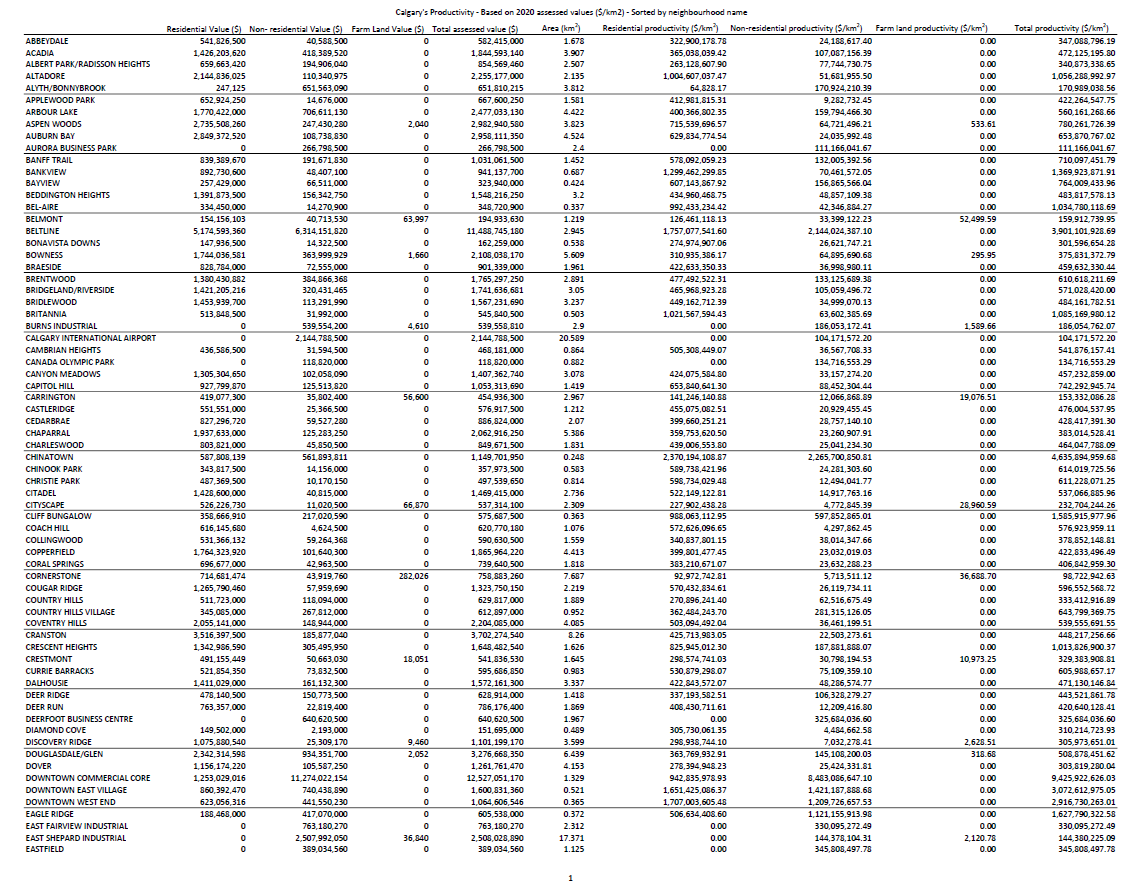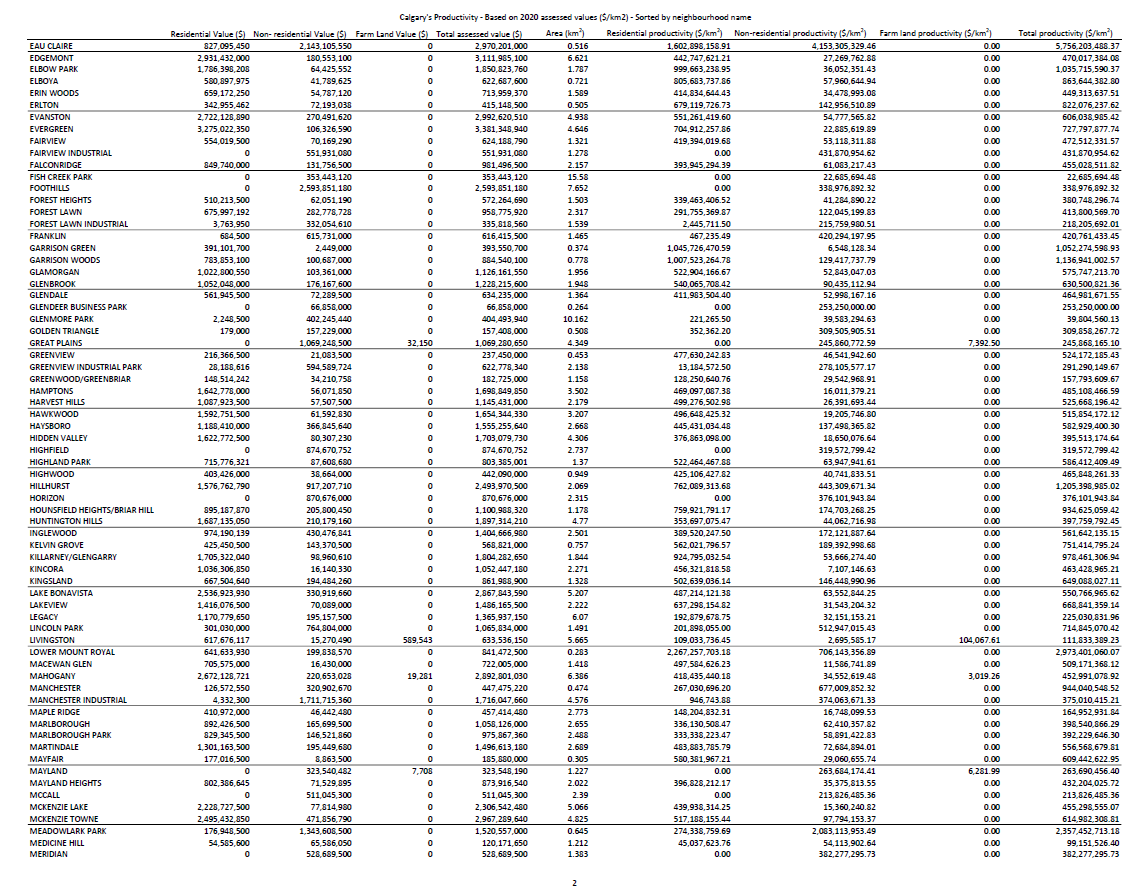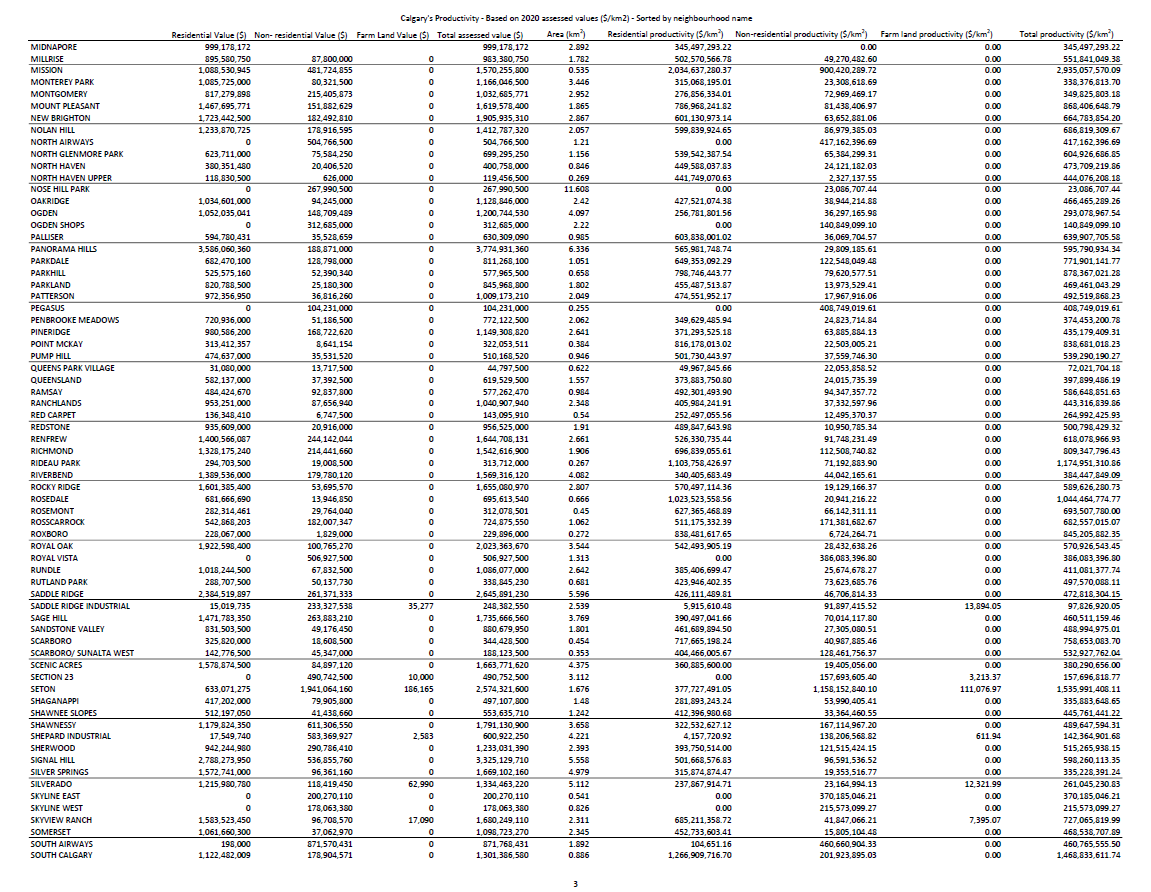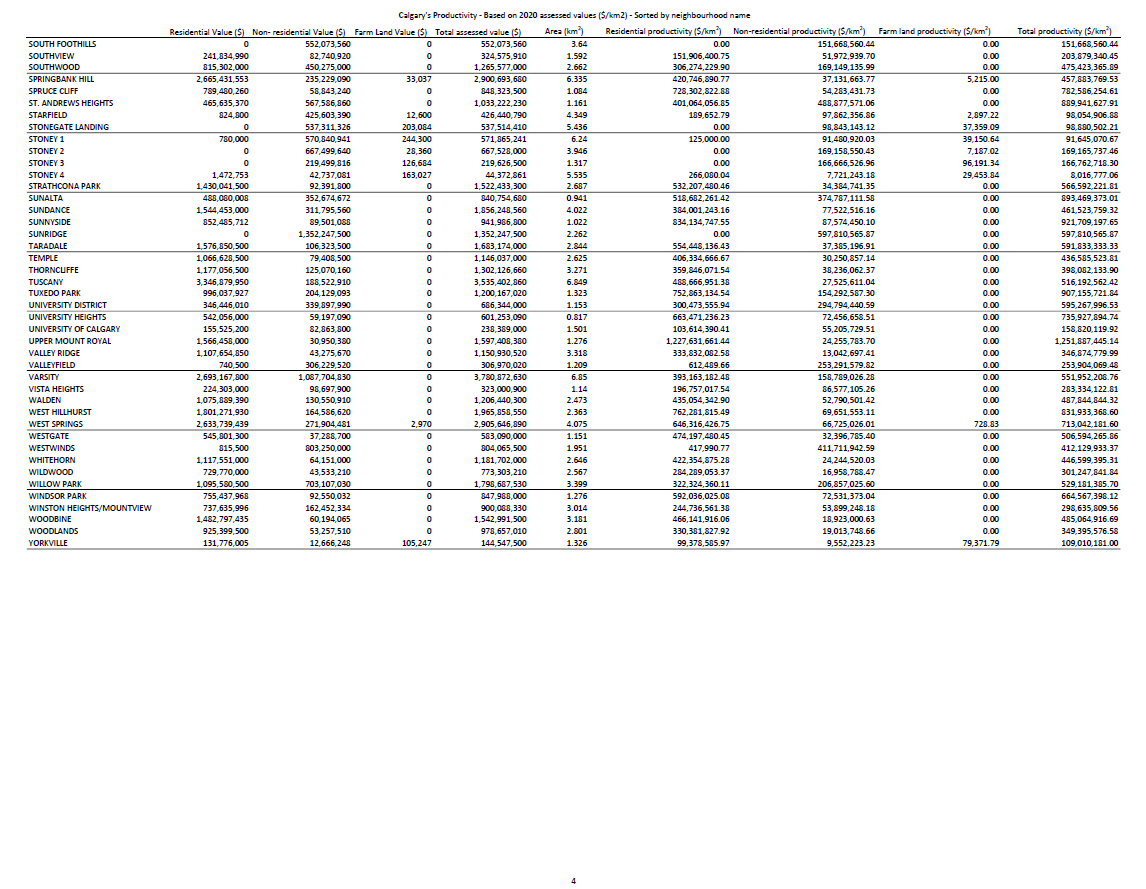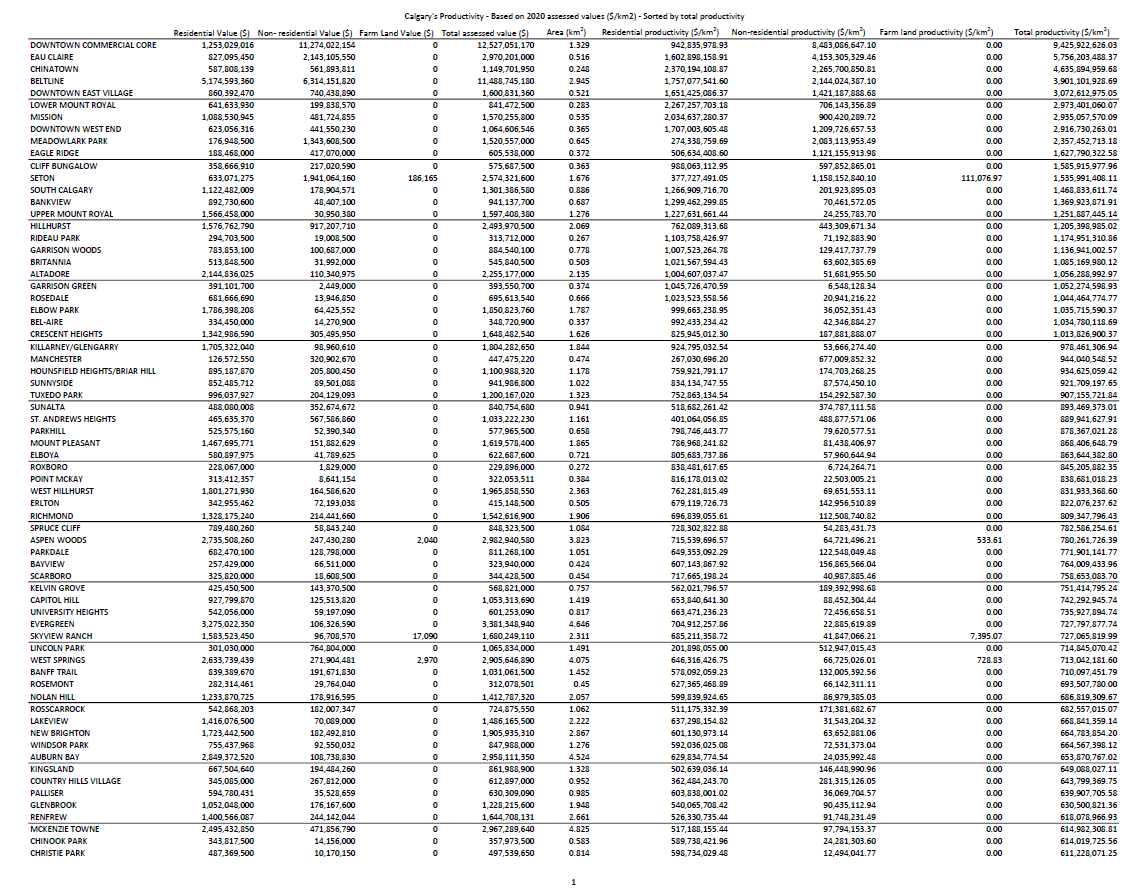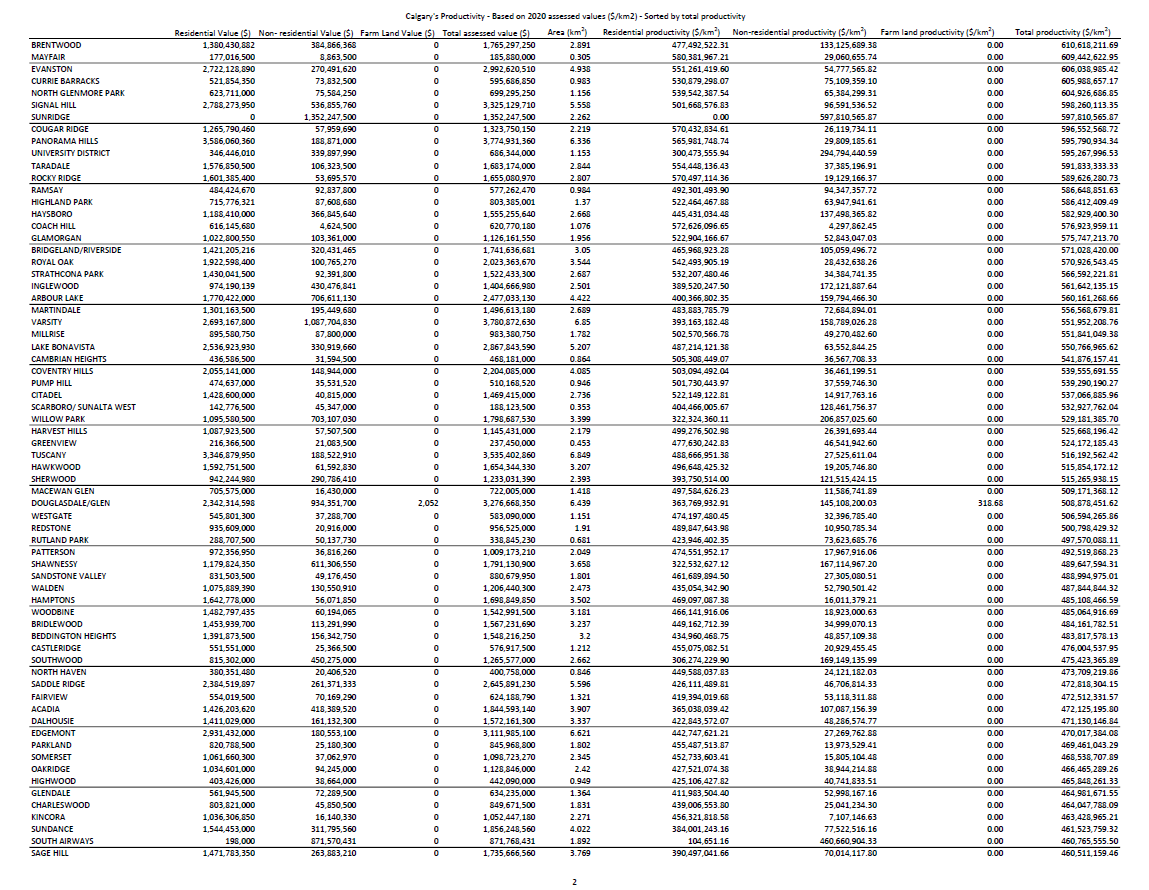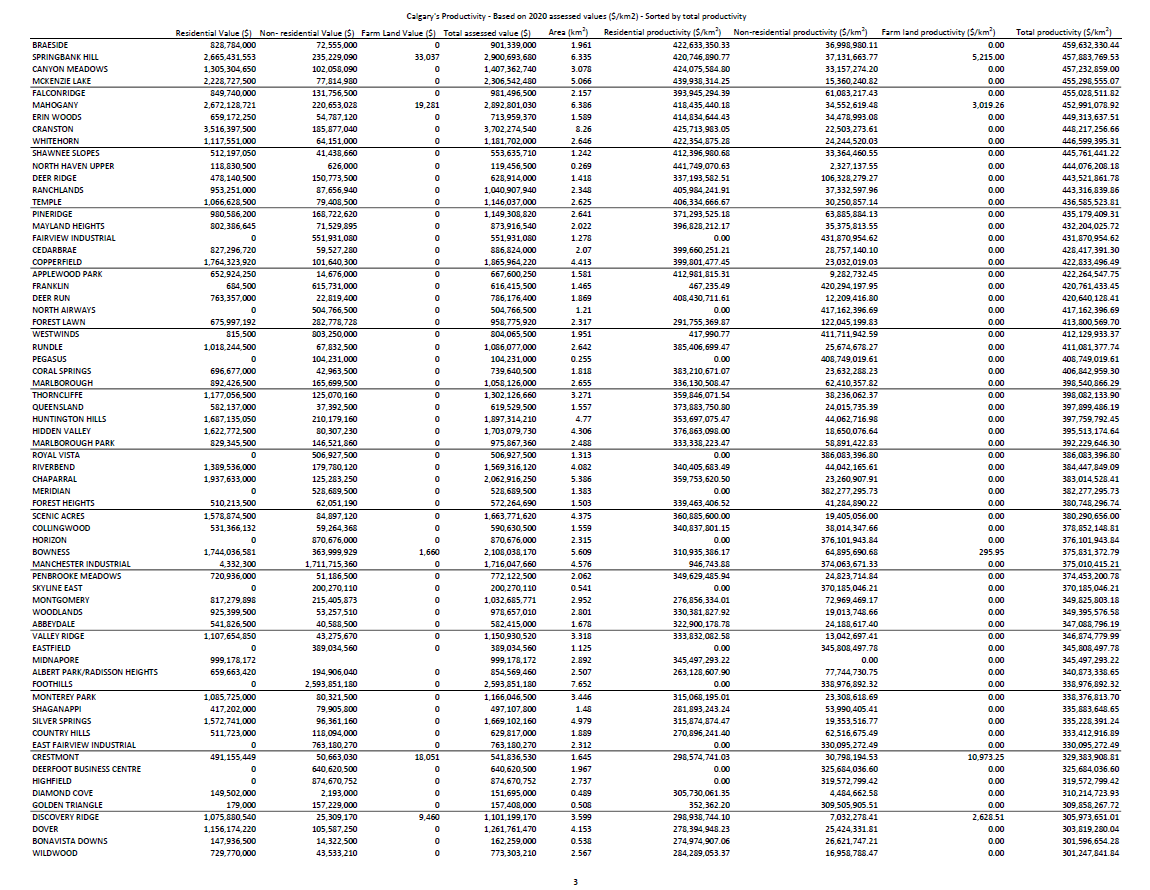
Long thread warning:
Let's talk about this video's claim that we can "modernize City Hall's planning policies" and have "housing choice" while "stand[ing] up for single family zoning."
#YYCPlan #YYCVote
Let's talk about this video's claim that we can "modernize City Hall's planning policies" and have "housing choice" while "stand[ing] up for single family zoning."
#YYCPlan #YYCVote
https://twitter.com/collenbe/status/1443687449830453258
First, here's Calgary's R-1 zoning. In most of town (in orange), you can only build detached homes without Council approving a land use change. Our default doesn't allow much housing choice.
Now, let's talk about the ratio between the improvement (building) value and land value.
Now, let's talk about the ratio between the improvement (building) value and land value.
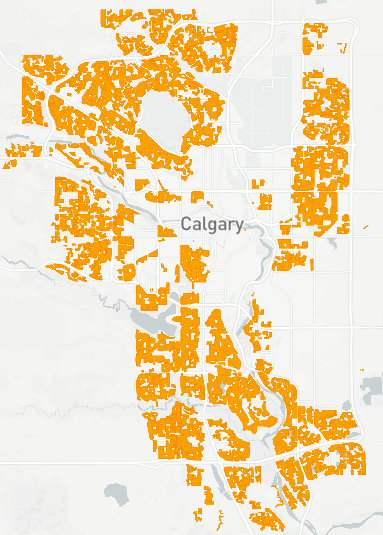
For example, most people don't buy a lot for $5 and build a granite building or buy a lot for $1M and put up a tent. When the land is worth considerably more than the building, most people will change the building. R-1 zoning restricts their options.
strongtowns.org/journal/2017/6…
strongtowns.org/journal/2017/6…

Detached houses are great but not allowing change prevents feedback and distorts markets.
In redeveloping areas, R-1 zoning is McMansion zoning. In practice, "standing up for single family zoning" protects detached houses for people who can outbid others.
strongtowns.org/journal/2019/7…
In redeveloping areas, R-1 zoning is McMansion zoning. In practice, "standing up for single family zoning" protects detached houses for people who can outbid others.
strongtowns.org/journal/2019/7…
Yes, letting people do more with their land could make the land worth more. In places near jobs, transit, and amenities, R-1 zoning can artificially lower land prices while keeping house prices high. This is another way R-1 zoning can distort markets.
https://twitter.com/ShaneDPhillips/status/1438203442741198850
As an aside, this tightly wound, highly protective zoning benefits people who already own land and big developers who have the time and money to go through the rezoning process. It encourages the kind of lobbying that seems the opposite of transparency.
strongtowns.org/journal/2020/2…
strongtowns.org/journal/2020/2…
So, how have other North American cities decided to "modernize City Hall's planning policies" and ensure "housing choice?"
In short: they allow more housing. This is the opposite of protecting detached houses.
In short: they allow more housing. This is the opposite of protecting detached houses.
In 2018, Minneapolis allowed up to triplexes everywhere.
strongtowns.org/journal/2018/1…
strongtowns.org/journal/2018/1…
In 2020, Portland allowed up to four homes on almost any lot, or up to six homes for price-regulated projects.
sightline.org/2020/08/11/on-…
sightline.org/2020/08/11/on-…
This piece suggests lessons from what housing options are financially viable in Portland:
On most urban lots, legalizing smallplexes would mean nothing at all for many years.
The best way to make an infill project work is to avoid demolition.
sightline.org/2021/08/01/we-…
On most urban lots, legalizing smallplexes would mean nothing at all for many years.
The best way to make an infill project work is to avoid demolition.
sightline.org/2021/08/01/we-…
In 2021, Sacramento allowed up to at least fourplexes everywhere and removed parking minimums.
strongtowns.org/journal/2021/1…
strongtowns.org/journal/2021/1…
If those sound like places full of dirty hippies, let's turn to Texas. Over twenty years ago, Houston lowered minimum lots sizes.
A century ago, people in Calgary built houses on smaller lots. We could allow them to do that again.
planetizen.com/blogs/109955-h…
A century ago, people in Calgary built houses on smaller lots. We could allow them to do that again.
planetizen.com/blogs/109955-h…
South of the border, there appears to be a conservative case for ending single-family zoning.
theamericanconservative.com/urbs/its-time-…
theamericanconservative.com/urbs/its-time-…
This week, realtors in Ontario called on the province to end "exclusionary single-family zoning rules in high-demand areas" because "outdated zoning laws ... drive up costs of homes or drive away affordable homes in a neighbourhood entirely."
orea.com/News-and-Event…
orea.com/News-and-Event…
Here in Alberta, three recently updated planning policies allow housing choices by letting people build more houses:
In December 2018, Edmonton unanimously permitted duplexes and semi-detached homes as-of-right.
edmontonjournal.com/news/local-new…
In December 2018, Edmonton unanimously permitted duplexes and semi-detached homes as-of-right.
edmontonjournal.com/news/local-new…
In December 2020, Drumheller updated its land use bylaw. Rowhouses are allowed anywhere in the city.
landplanning.drumheller.ca
landplanning.drumheller.ca
In June 2021, Okotoks updated its land use bylaw and reduced "the number of land use districts from 33 to nine more inclusive, flexible districts that allow for greater ability to adapt to market changes."
Like Drumheller, rowhouses are allowed everywhere.
okotoks.ca/your-governmen…
Like Drumheller, rowhouses are allowed everywhere.
okotoks.ca/your-governmen…
So, it appears that modern planning policies allow housing choices by letting people build more houses.
We could have abundant, family-sized homes. We can work to keep house prices linked to local wages. The first step is allowing those houses.
sightline.org/2017/09/21/yes…
We could have abundant, family-sized homes. We can work to keep house prices linked to local wages. The first step is allowing those houses.
sightline.org/2017/09/21/yes…
Letting people do more with land that's in the city could help us get more value out of our existing infrastructure. This could help our municipal finances.
Rough math says we should spend or save ~$3B/yr to replace what we already own. We don't do that.
strongtowns.org/journal/2021/2…
Rough math says we should spend or save ~$3B/yr to replace what we already own. We don't do that.
strongtowns.org/journal/2021/2…
I want to elect people who are honest, wise, and good.
This candidate appears to fall short of that standard.
This candidate appears to fall short of that standard.
• • •
Missing some Tweet in this thread? You can try to
force a refresh


